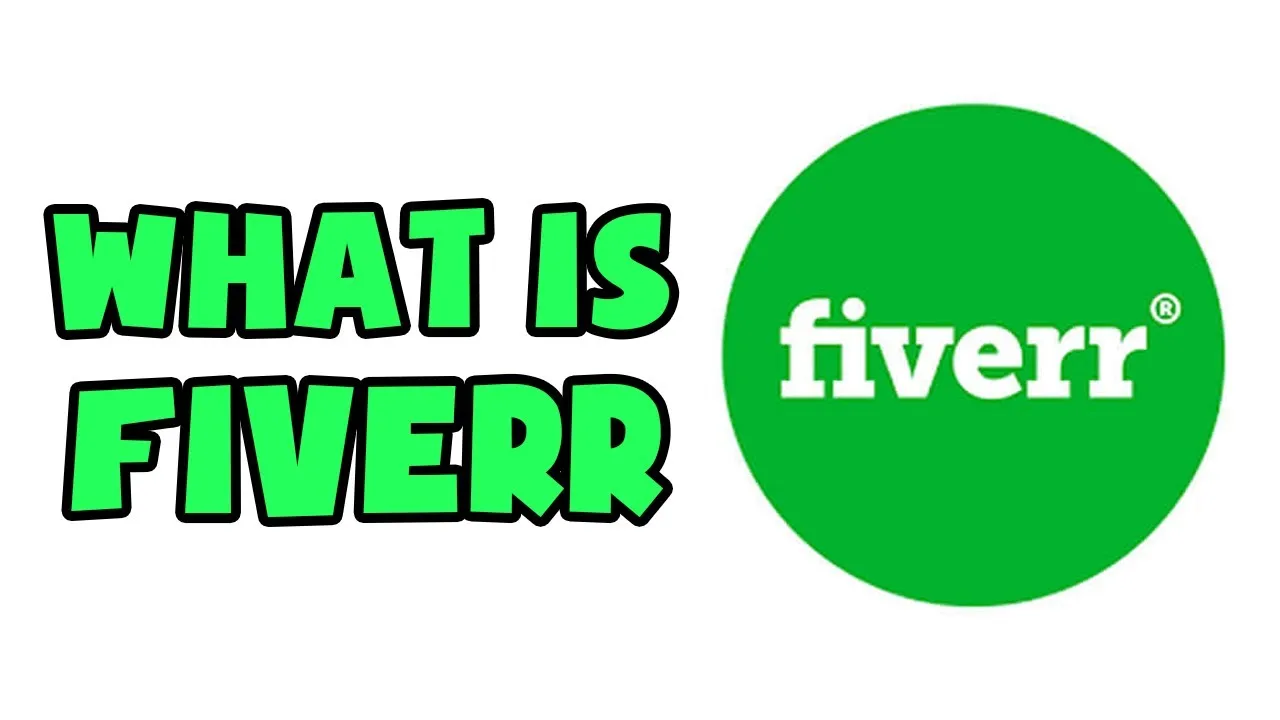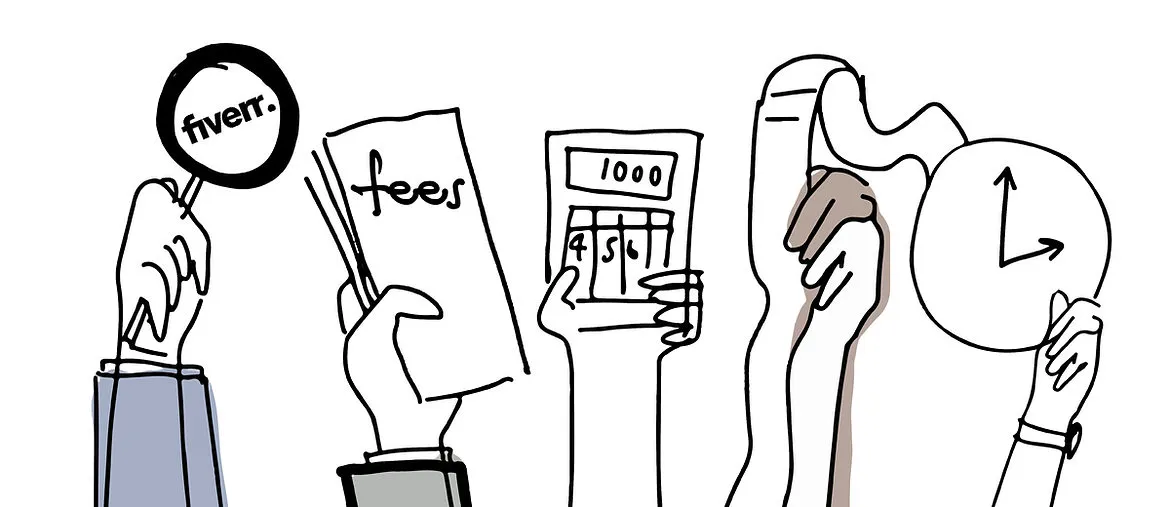If you've ever considered freelancing or hiring a freelancer, chances are you've come across Fiverr. Launched in 2010, Fiverr is a popular online marketplace that connects freelancers offering various services, or "gigs," with clients in need. The platform empowers individuals to find talent from across the globe, whether you’re looking for graphic design, writing, programming, or even voiceover work. What makes it stand out is its pricing model, where services start at just $5—hence the name "Fiverr."
Fiverr is user-friendly and designed to cater to both freelancers and clients. As a seller, you can easily set up your profile, list your services, and showcase your portfolio. For buyers, browsing through an extensive range of gigs makes it easy to find exactly what you need. With its diverse array of offerings and a global talent pool, Fiverr has become a go-to platform for anyone looking to accomplish various tasks without breaking the bank.
What Are Fiverr Fees?

Understanding Fiverr fees is crucial for both freelancers and clients. Whether you're a seller pricing your services or a buyer looking to make the most of your budget, being aware of these fees can help you navigate the platform more effectively. Fiverr's fee structure includes two main components: service fees and processing fees.
1. Service Fees: Fiverr charges a service fee for every transaction. For sellers, Fiverr takes a commission of 20% on each gig sold. So, if you charge $100 for a service, Fiverr will retain $20, and you’ll receive $80. This fee is deducted automatically before the funds are transferred to your account. For buyers, Fiverr adds a service fee to the total cost of the gig. This fee varies based on the order amount, typically around $2 for orders under $40 and 5% for orders over $40.
2. Processing Fees: In addition to service fees, clients may also encounter payment processing fees. This fee is usually minimal, often around $1 for smaller transactions, but it varies depending on the payment method used (like credit card or PayPal).
In summary, Fiverr fees can add up, so it’s essential to factor these costs into your overall pricing strategy if you’re a seller and budget if you’re a buyer. Understanding these fees will help you make informed decisions as you navigate the Fiverr marketplace.
Also Read This: How to Invite Friends on Fiverr
How Fiverr Fees Work for Buyers

When using Fiverr, it's essential for buyers to understand how fees impact their total cost. Fiverr's platform is designed to be straightforward, but knowing the ins and outs can save you some surprises at checkout.
Firstly, when you see the price listed for a gig, that’s just the starting point. Here's what you might encounter:
- Service Fee: Fiverr adds a service fee to every order you place. This fee starts at $2 for purchases under $40 and goes up to 5% for higher-end services. For instance, if you order a gig for $100, you’d pay an additional $5 in service fees.
- Currency Conversion Fees: Should you be purchasing from outside the U.S., there might be currency conversion fees depending on your payment method. It's wise to check with your bank or payment provider to understand these costs.
- Additional Gig Extras: Many sellers offer extras to enhance their service. If you opt for these, remember that they add to your total, thus impacting the overall cost.
So, if you’re budgeting for a project on Fiverr, keep these potential fees in mind. Planning for them means you’ll avoid those “wait, what?!” moments when you see the final total. The platform is a great resource and understanding these fees ensures you get what you pay for!
Also Read This: How to Withdraw Money from Fiverr After 90 Days
Understanding Seller Fees on Fiverr

As a seller on Fiverr, it's equally important to grasp how Fiverr fees impact your earnings. Knowing this can help you make informed decisions about pricing your gigs and understanding your profit margins.
The fee structure for sellers is straightforward:
| Service Amount | Fee Percentage |
|---|---|
| Up to $40 | 20% |
| Over $40 | $8 + 15% of amount over $40 |
Example: If you sell a service for $100, Fiverr takes $8 from the first $40 and 15% of the remaining $60, which equals $9. Thus, your total fee would be $17, leaving you with $83.
Another factor to consider is the withdrawal fees, which occur when you cash out your earnings. Depending on your chosen payment method, these can vary. PayPal, for instance, has its own fees to consider. It’s always good to check their current rates to avoid surprises.
In summary, being aware of Fiverr's seller fees allows you to fine-tune your service pricing strategically. It’s all about knowing your worth and ensuring you’re still meeting your income goals even after deductions!
Also Read This: How to Sell Beats on Fiverr: A Comprehensive Guide
5. Types of Fees You Might Encounter
When diving into the vibrant world of Fiverr, it's essential to be aware of the various fees that could be lurking behind the scenes. Understanding these fees can help you navigate your Fiverr experience without any unexpected surprises. Here’s a breakdown of the most common types of fees you might encounter:
- Service Fee: This is typically a percentage of your order total that Fiverr charges as a service fee. It usually ranges from 5% to 20%, depending on the size of the order. This fee ensures that Fiverr can maintain its platform and offer various features.
- Currency Conversion Fee: If you're working with clients or freelancers from different countries, you might face a currency conversion fee. This comes into play if you're dealing with different currencies, and it can add a little extra cost to transactions.
- Withdrawal Fee: When you decide to move your earnings from Fiverr to your bank or PayPal, a withdrawal fee may apply. This fee varies by withdrawal method, so it’s crucial to check the details before transferring funds.
- Gig Extras: If you choose to enhance your order by adding extras or upgrades, these can come with additional costs. While these extras can provide more value, make sure you factor them into your budget.
- Custom Order Fees: In some cases, if you work through custom orders that involve specific requirements or larger projects, there may be additional fees associated with those requests.
By being aware of these fees and how they work, you can make better financial decisions while using Fiverr.
Also Read This: How to Get Your Fiverr Gig Featured
6. Tips for Minimizing Fees on Fiverr
Now that you're familiar with the types of fees on Fiverr, let’s talk strategies! Minimizing fees can help you keep more of your hard-earned money, whether you’re a buyer or seller. Here are some practical tips to help you reduce costs:
- Choose the Right Payment Method: Different withdrawal methods have varying fees. If you're a seller, opting for PayPal might offer lower fees compared to other options. Do your research to find the most cost-effective solution.
- Keep Order Sizes in Mind: If you're a buyer, consider consolidating your orders. Bigger orders often incur lower service fees as a percentage. So rather than making frequent small purchases, see if you can combine them into one larger project.
- Be Aware of Currency Conversion: If you work with international clients, try to agree on a currency to avoid conversion fees. Selecting a common currency like USD can save you some bucks!
- Utilize Gig Packages: Many sellers offer packages that include multiple services at a discounted rate. This often means fewer extra fees for you while providing great value.
- Ask for Discounts: Don’t be shy! If you’re planning to make a bulk purchase or repeat orders, it’s worth asking the seller if they can offer you a discount. Many freelancers appreciate long-term clients and might accommodate you.
By following these tips, you can make the most of your Fiverr experience while keeping your expenditures in check!
Understanding Fiverr Fees: What You Need to Know
Fiverr is a popular platform where freelancers can offer their services, known as "gigs," to clients around the world. While it provides a great opportunity for both buyers and sellers, it is essential to understand the fee structure to maximize your experience. Here’s a breakdown of Fiverr fees.
Fiverr's Fees Structure:
| Fee Type | Description |
|---|---|
| Service Fee | Fiverr charges sellers a fee of 20% on each completed order. This means if you sell a gig for $100, you'll receive $80. |
| Buyer Fee | Buyers pay a service fee ranging from $2 to $25 depending on the order cost. This fee is added at checkout. |
| Withdrawal Fees | Withdrawing your earnings from Fiverr incurs fees depending on the payment method. For example, PayPal charges a percentage per transaction. |
Factors to Consider:
- Always calculate your net earnings after Fiverr’s 20% cut.
- Be aware of the buyer fees which could affect your order volume.
- Choose the right payment method to minimize withdrawal fees.
Understanding Fiverr fees is crucial for both freelancers and buyers. With this knowledge, you can price your services effectively and make informed purchasing decisions.
Conclusion: Making the Most Out of Your Fiverr Experience
By familiarizing yourself with Fiverr fees, you can enhance your freelancing journey on the platform, enabling better pricing strategies and smarter purchasing decisions that contribute to a more rewarding experience overall.



